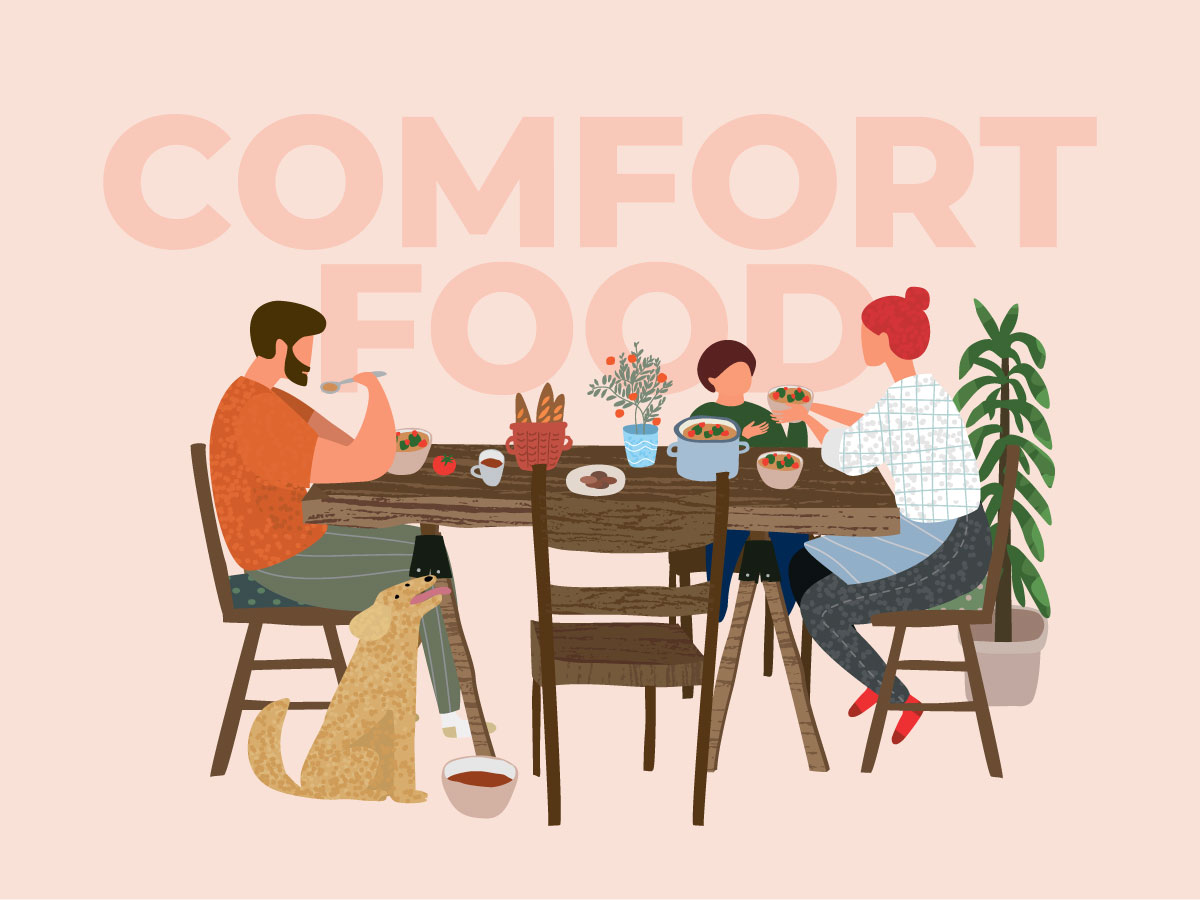

The growing trend of self-care in recent years has taken an interesting turn during the coronavirus pandemic. In place of (or in addition to) moisturizing masks and soothing baths, consumers are turning to food. While groceries and domestic supplies are universally in demand right now, this surging demand is not equally distributed across all types of foods. Bucking the trends of recent years toward organic, healthy products, traditional brands that have somewhat fallen out of fashion due to perceived (or actual) unhealthiness are finding themselves back in consumers’ baskets.
This demand isn’t driven by rational and objective needs for foods that will keep for longer. Instead, consumers are seeking foods that have a nostalgic, comforting appeal, and giving themselves permission to break dietary rules and standards in favor of emotional support. After all, there’s a reason quinoa isn’t flying off the shelf at the same rate as macaroni, even though it keeps just as well.
Comfort food is a phenomenon that’s familiar to most, but can be difficult to define. It’s not simply food that makes you feel good. Clean eating and healthy diets make us feel good both physically and emotionally, but don’t necessarily make us feel comforted. Comfort food specifically helps to stave off feelings of loneliness, feelings which are especially familiar during social distancing. But are comfort foods really just the brain’s way of telling us we need more calories in our diets? Do comfort foods actually make us feel better? Or do they encourage us to overindulge and feel worse in the long run?
The science of comfort foods is fascinating, perhaps because there is no “gotcha” biological mechanism at play. Comfort foods aren’t universally savory or sweet, or even necessarily high in calories (though researchers point out that green foods rarely make the list).
Comfort foods also vary wildly across cultures and upbringings. An informal poll of LRW employees’ comfort foods during the pandemic included breakfast items such as pancakes and French toast, dumplings, and lots of mac and cheese. People also are just as likely to turn to comfort foods when they want to stop feeling bad as they do when they want to celebrate feeling good.

Whether comfort foods actually make people feel objectively better or not is still up for debate. Some research suggests that comfort foods don’t perform any better than other favorite foods at making us feel better. Instead, the real power of comfort food may lie in its ability to connect us with people through memories of past social experiences, such as birthdays and holidays. People who report higher levels of connections with others are more likely to seek out comfort foods, and many people seek out comfort food when their sense of belonging is threatened. Instead of the food itself making us feel better, it seems that comfort foods serve as a tangible connection to our happiest memories, and that these memories are what make us feel good. No matter where or when you have a slice of apple pie just like the one your grandmother used to make, you’re mentally whisked back to the warm, fuzzy memories of Nana doting over you and filling you with sweets.
The implications of all this delicious nostalgia are evident for brands like Kraft and JM Smuckers: lean into your successes and remind consumers of the foods they’ve been missing, and craving, the past few years. If your brand has seen decreased demand in recent years, the need for comfort is a fantastic opportunity to renew consumer love for your brand.
But even beyond the food and beverage space, brands of all types can lean into comfort. By reaching out to your loyal following or positioning your new brand to tap into happy memories and the simpler (or safer) days of yore, you can reach consumers who are craving the psychological warmth of nostalgia.
Given that the need for (and benefits of) comfort foods may disproportionately impact people who tend to be more social, understanding your target consumers’ fundamental needs (for Belonging, Appeal, Security, and Exploration) will help brands determine whether leaning into comfort is a worthwhile venture.
Perhaps the biggest question for brands is whether the increased need for comfort represents a temporal blip or a major shift in consumer needs. We’ve written before about the potential for long-term disruption caused by coronavirus, and the increased value consumers find in comfort is certainly an opportunity to reset the stage and allow consumers to create new comforting habits to fuel future demand.
But there’s another opportunity on the horizon for really smart brands. Despite the threat of uncertainty and scarcity, the pandemic has presented consumers with an abundance of the most valuable commodity: time. As consumers are spending more time with their families, more time learning new hobbies, and spending more time on themselves, it’s likely that when we’re all back to the rat-race of day-to-day life, we’ll look back fondly on the experiences we are able to create today. Our choices right now are setting the stage for the comforts we crave in the future.
You must be logged in to post a comment.